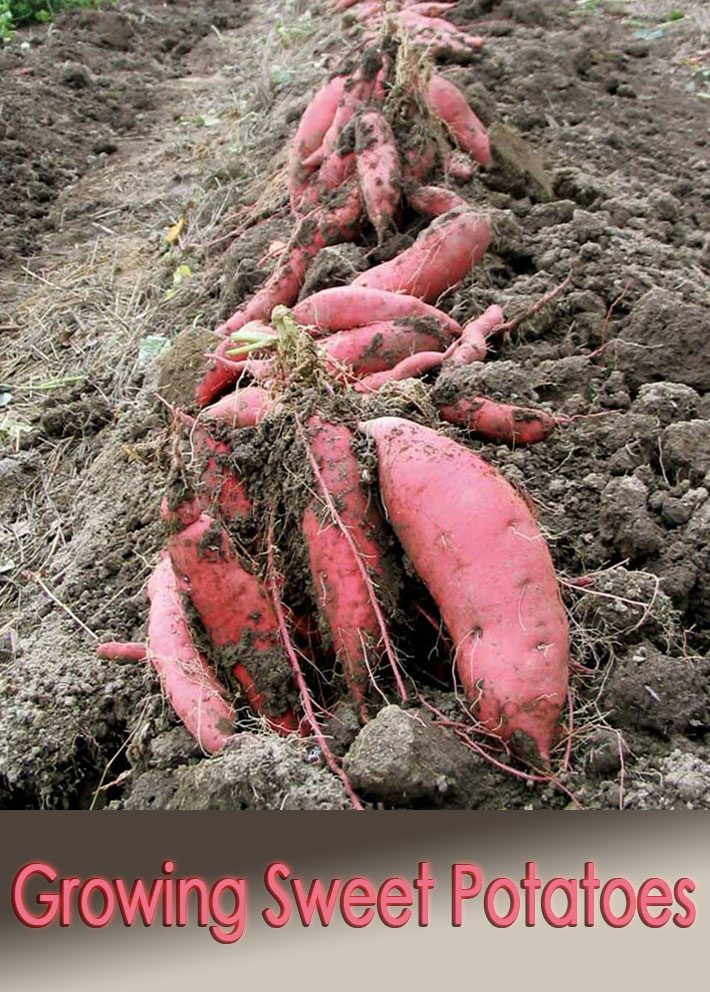
Sweet potatoes are a straight-forward but frost-tender crop – they thrive in hot conditions and are drought-resistant once established. They don’t need high soil fertility levels or a lot of organic matter. Field planting comes later than most spring crops, leaving you free to deal with other transplants first. Likewise, after the vines cover the ground they need little attention during the summer (apart from watering) until harvest.
Sweet potatoes are often called yams, but this is inaccurate! They are related to morning glories. Sweet potatoes are roots, not tubers, and will not even cross with yams. True yams are tropical tubers, not morning glory cousins. Enough about yams!
One baked sweet potato of 114gm (4oz) has 185% the RDA of vitamin A, 28% the RDA of Vitamin C, 100% of vitamin E, lots of anti-oxidants, and 160 calories, none from fat.
Deer are the main pests of sweet potatoes. The main successful ways to deal with deer are guns, dogs and fences, although we have success with motion-sensor water sprinklers too.
Sweet Potato Varieties
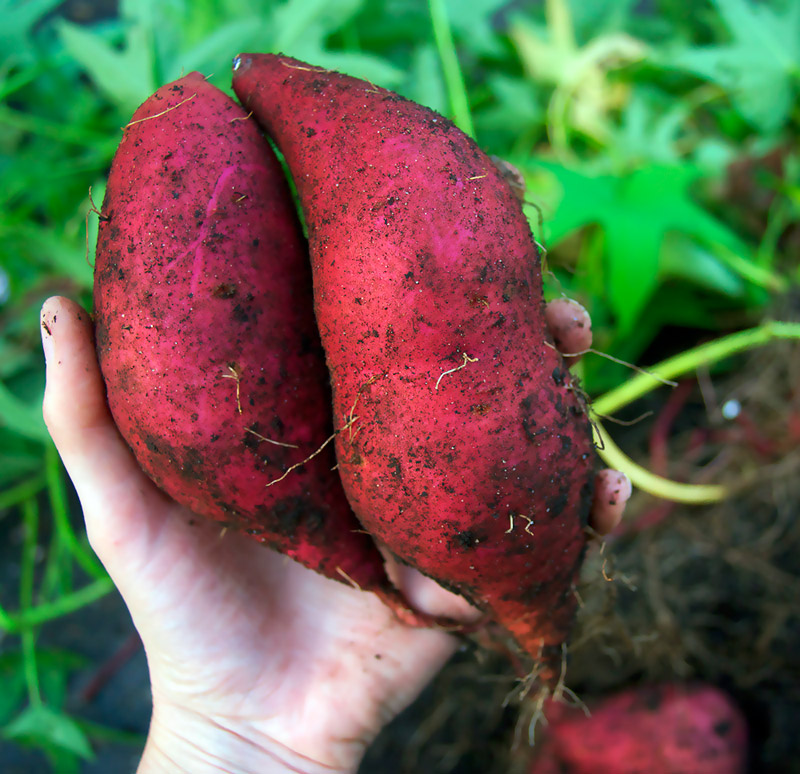
Modern varieties such as ‘Georgia Jet’ can grow to a good size in only 90 days, so sweet potatoes are not just for the South! As well as the traditional orange kinds, there are purple, yellow and white ones. There are ornamental kinds used for city beautification. Some have fancy-cut or heart-shaped leaves. There is the ‘Bunch Porto Rico’ which has short vines, ideal for those with not much space.
We grow ‘Beauregard’, ‘Georgia Jet’ and a white variety we don’t know the name of. It is less sweet than the orange varieties, and could be an alternative to “Irish” potatoes for people seeking food self-reliance in the south, where Irish potatoes are prone to diseases, and it is not recommended to replant ones you’ve grown.
Sweet Potato Crop Requirements
You need sunshine and warmth to grow sweet potatoes. It is not simply the number of days since planting, or your winter hardiness plant zone that create heavy yields, but the growing degree days (GDD, accumulated heat units).
According to Sandhill Preservation Society, fast-maturing sweet potatoes need about 1200 GDD (calculated on a base temperature of 55 degrees F) to produce a good yield. Black plastic mulch, row cover or a hoophouse can help increase the GDD. Daytime temperatures of 90 degrees F, with 70 degrees F nights are ideal.
How to Grow Sweet Potatoes
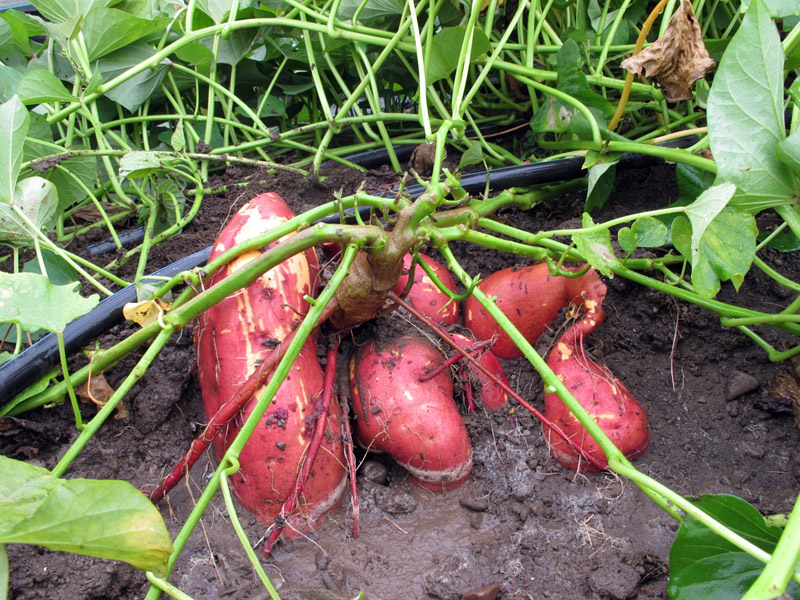
Sweet potatoes are usually planted out about 2 weeks after the last frost. The soil temperature should reach 65 degrees F at 4 inches deep on 4 consecutive days. For us, that’s around May 12, although we were 3 weeks later than that this year, due to cold rainy weather.
I prefer to wait for the slips to grow four leaves or more in the greenhouse before planting out, rather than rush them out. For big potatoes, just plant the slip vertically. For average-sized roots but larger total yields, plant the slips horizontally 2-3 inches deep. Have 3-5 leaf nodes underground and only the tips above the ground – this also gives the plants a second chance if frost strikes.
If, on the other hand, you are planting in hot dry weather, water the soil first, and keep the roots enclosed in damp compost as you plant. Sweet potatoes are often hilled to minimize flood damage. Hills can be made before planting. In colder areas, black plastic mulch can be used to warm the pre-formed ridges for about three weeks before you plant, and increase both the rate of growth and the yield.
We used to plant on the flat in bare soil, with overhead irrigation. We sometimes had bad weeds. We now use drip tape for irrigation — fewer weeds! After a wet year, we tried ridging before planting, to reduce flood losses. It was a bit hard to keep the drip tape on the ridges — we planted on alternate sides of the tape, so it couldn’t slide sown.
Nowadays we use ridges, drip tape and biodegradable plastic mulch (even fewer weeds!). We run the drip tape while planting, and nudge it over to be where we want it, relative to the plants.
Using Biodegradable Plastic Mulch
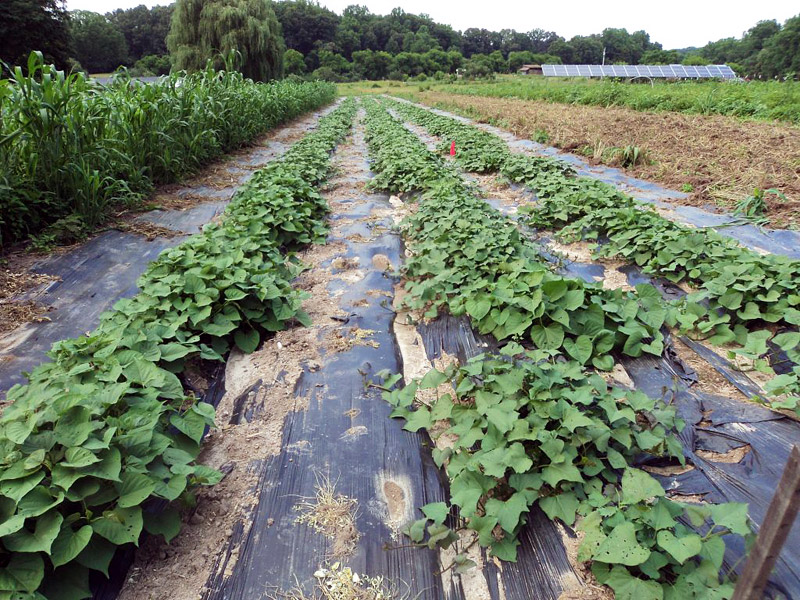
We like biodegradable plastic mulch because it warms the soil, and we get higher yields. After keeping the weeds down for a few months, it biodegrades, so we don’t have to remove it and cause heaps of agricultural plastic trash. It’s especially suitable for vining crops like sweet potatoes and watermelons, because the vines cover the ground as the plastic disintegrates, and weeds have little chance of growing.
The Stages of Sweet Potato Plant Development
Your plants won’t seem to be growing much during the first month after transplanting. Don’t worry – this is the root development stage. Roots can dive 8’ deep in 40 days. Give an inch of water per week as needed, and pull weeds.
The second month or so is the vine growth stage. The roots begin to store starch and sugar close to the base of the stem. After the vines cover the ground very few weeds will grow. We often do one walkthrough to pull or clip pigweed. Don’t worry if the vines root along the length sporadically – it does not reduce yield, even though you may have heard otherwise.
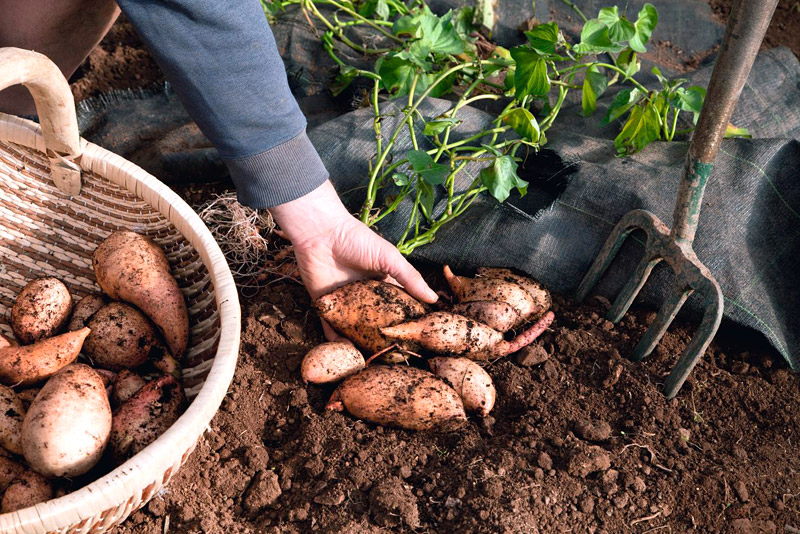
During the third and fourth month of growth, the potatoes grow and the vining slows down. Unlike white potatoes, which come to a natural end when the tops die, sweet potatoes have no pre-destined end date, so you can decide when to dig them up, before cold weather. The longer you wait, the bigger the potatoes, but you are gambling with the weather. Make sure you get them up before the soil temperature gets down to 55°F, or they will be permanently damaged.
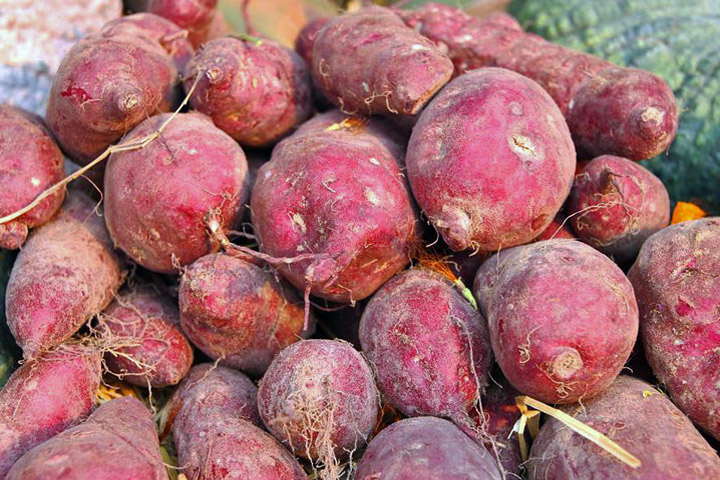

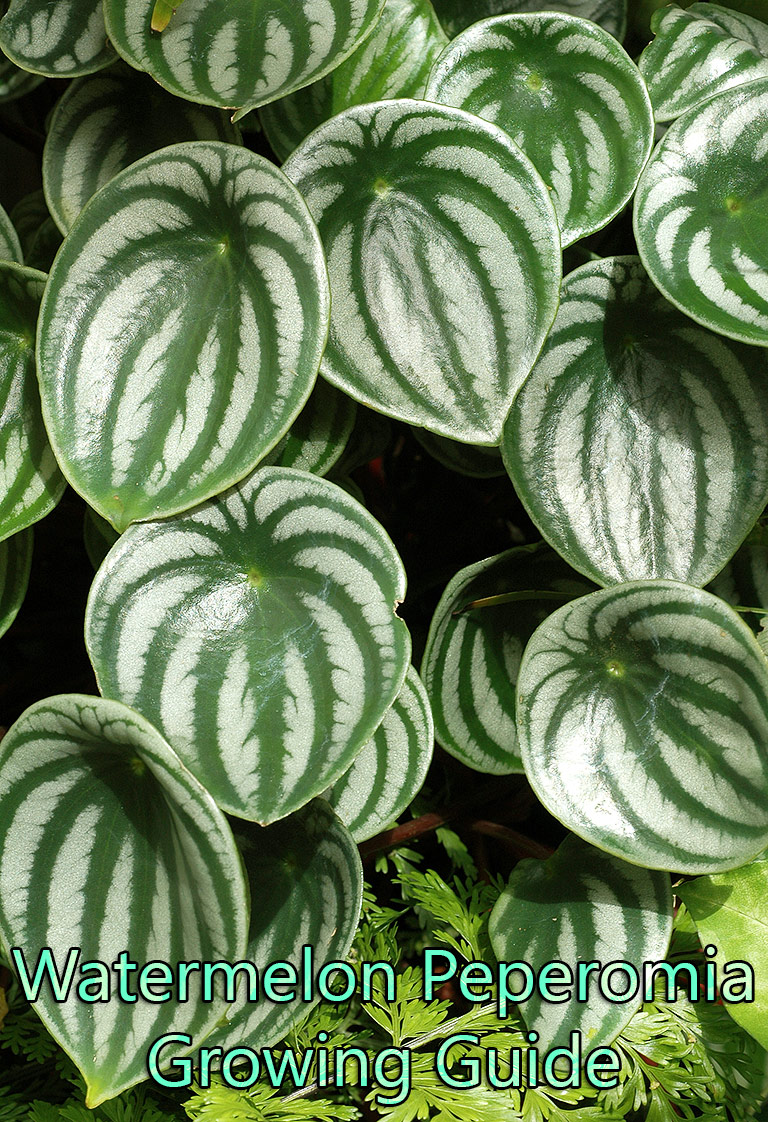


When holidaying in Spain a couple of years back we bought some sweet potatos from a supermarket. We cooked them and when we took out first mouthful both Jeff and I looked at each other and at the same time said “chestnuts”. The taste was nearly identical to eating chestnuts. We tried to find them again but nobody could tell us the variety. Have you ever heard of or tasted this variety?